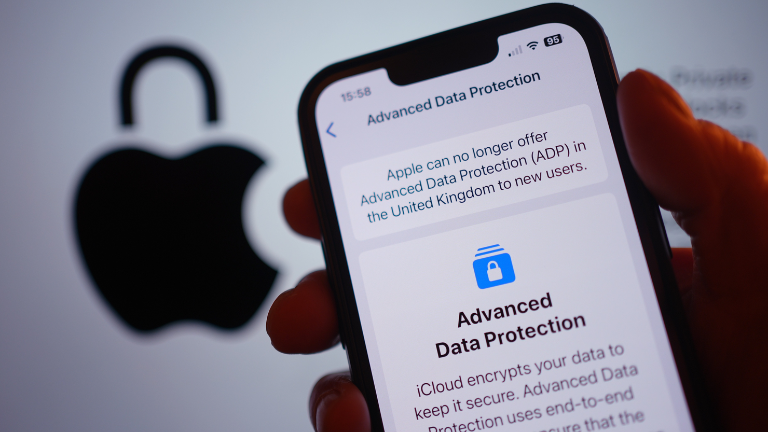Apple ADP Removal: What It Means for User Privacy and Security
In a controversial move, Apple has disabled Advanced Data Protection (ADP) for new users in the UK, following government pressure to create a backdoor for data access. The Apple ADP Removal decision raises serious concerns about digital privacy, government surveillance, and global cybersecurity.
What is Apple ADP?
🔹 Advanced Data Protection (ADP) is Apple’s strongest encryption feature, offering end-to-end encryption for iCloud backups, messages, photos, and other sensitive data.
🔹 With ADP enabled, only the user can decrypt their data, making it virtually impossible for hackers—or even Apple—to access it.
🔹 Apple introduced ADP to protect users from data breaches, cyber threats, and unauthorized government access.
However, due to pressure from the UK government, Apple has removed ADP for new UK users, a decision that has sparked backlash from privacy advocates worldwide.
Why Did Apple Remove ADP in the UK?
According to reports, the Apple ADP Removal is directly linked to demands made under the UK’s Investigatory Powers Act (IPA).
🔻 The UK government wants Apple to create a backdoor to access encrypted user data.
🔻 Apple refused to comply, stating that such a move would weaken global security.
🔻 Instead of introducing a backdoor, Apple disabled ADP entirely for new UK users.
Apple’s Statement:
“We are gravely disappointed that the protections provided by ADP will not be available to our customers in the UK given the continuing rise of data breaches and other threats to customer privacy.”
This decision highlights the growing tension between tech companies and government agencies over encryption, surveillance, and privacy rights.
What Apple ADP Removal Means for Users
1. UK Users Lose Apple’s Strongest Security Feature
🚨 New Apple users in the UK will no longer have access to ADP.
🚨 Existing ADP users have a grace period to disable it manually.
🚨 This means iCloud backups, messages, and sensitive data will no longer be end-to-end encrypted.
Without ADP, user data is more vulnerable to:
✔ Hacking and data breaches
✔ Government surveillance
✔ Unauthorized third-party access
2. A Dangerous Precedent for Other Countries
🌍 If Apple caves to the UK government’s demands, other countries may follow.
🌍 Governments worldwide may pressure Apple to remove ADP in their regions.
🌍 This could lead to weakened encryption standards globally, making private data easier to access.
3. Increased Government Surveillance Risks
👀 Without end-to-end encryption, government agencies could:
✔ Monitor personal messages and communications
✔ Access sensitive iCloud backups without user consent
✔ Compromise digital freedom and user privacy
The Apple ADP Removal signals a potential shift towards mass surveillance, which many cybersecurity experts warn could erode digital privacy rights.
Apple’s Stance: No Backdoors, But a Hard Choice
Apple has repeatedly opposed government demands to weaken encryption.
Apple’s Commitment to Privacy:
“As we have said many times before, we have never built a backdoor or master key to any of our products or services and we never will.”
By removing ADP for UK users, Apple has taken a firm stance against creating backdoors—but at a cost. Instead of weakening security for all users, it has restricted access to ADP in certain regions.
🔹 While this move protects global encryption standards, it also limits security for UK users.
🔹 Apple’s decision highlights the challenges of balancing government regulations and user privacy.
🔹 The Apple ADP Removal debate raises serious ethical concerns about digital rights.
What Can Users Do After Apple ADP Removal?
1. Enable Other Apple Security Features
🔒 Even without ADP, users can enhance security by:
✔ Using strong passcodes and two-factor authentication (2FA)
✔ Encrypting personal data with third-party apps
✔ Using Apple’s built-in privacy tools
2. Consider Alternative Cloud Encryption Services
🔐 Users concerned about data privacy can:
✔ Use encrypted cloud storage services like ProtonDrive or Tresorit.
✔ Store sensitive backups locally instead of iCloud.
✔ Use secure messaging apps with end-to-end encryption, such as Signal.
3. Stay Informed About Digital Privacy Laws
📢 Advocate for strong encryption laws by supporting privacy organizations.
📢 Monitor how other countries react to the Apple ADP Removal.
📢 Encourage Apple and other tech companies to maintain strong encryption globally.
Apple ADP Removal and the Future of Encryption
The Apple ADP Removal in the UK is a critical moment for digital privacy. While Apple has stood firm against government backdoors, its decision to disable ADP for UK users raises serious concerns.
🚀 Key Takeaways:
✔ Apple removed ADP due to UK government pressure under the Investigatory Powers Act.
✔ Without ADP, iCloud backups and sensitive data are now more vulnerable.
✔ This move sets a precedent for other countries to demand similar encryption rollbacks.
✔ Users should take additional steps to protect their digital privacy.
As the battle over encryption and surveillance continues, will other governments follow the UK’s lead? Or will tech companies fight to keep strong encryption protections intact?
💬 What are your thoughts on the Apple ADP Removal? Should Apple reinstate ADP or comply with government requests?







